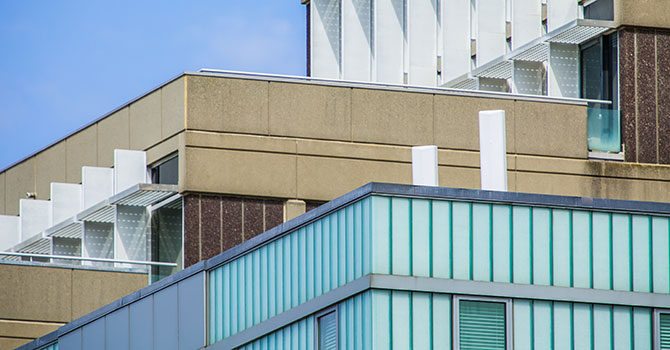New telecommunications turnkey trends are beginning to take dominance over the more traditional macro-cell sites. With these new trends – distributed antenna systems (DAS), small cell systems, and service contracting – industry professionals are able to create solutions that meet our country's ever-growing wireless demands.
Trending: DAS
Carriers have continued to use DAS over the last several years to enhance coverage and capacity of cellular networks in high traffic and high capacity areas including buildings, stadiums, and malls. DAS use a network of low power antennas to provide coverage.
DAS are comprised of headend equipment tied to distributed low power antennas and have the ability to operate under multiple frequencies. Because they can use multiple frequencies, DAS can support multiple carriers and can be developed as a neutral host DAS. While the signal is split at the headend equipment, the neutral host DAS allows carriers to share antennas and internal cabling. This creates the ability to share implementation costs among multiple carriers. Some infrastructure companies develop neutral host DAS inside large facilities and lease the shared components to wireless carriers.
 DAS installed at Harvard University to meet the demands of the high traffic university campus.
DAS installed at Harvard University to meet the demands of the high traffic university campus.
Trending: Small Cells
Small cells cover highly specified areas and are used as an alternative densification strategy when a DAS proves too costly. These small cell solutions can include femtocells, pico cells, and micro cells. Typically, micro cells use a centralized base station tied to remote radios and low power antennas using Ethernet, coaxial cables, and fiber optics. The remote radios and antenna are placed at node locations within the small cell system.
One notable type of small cell system is a centralized-remote area network (C-RAN), which includes a dark fiber backhaul solution. Dark fiber is comprised of fiber strands specified for the small cell system. The fiber is installed either above grade on utility structures or buried underground. It is then routed from the central base station to a network of nodes, which are typically located along public right-of-ways. Additional fiber strands are built into the fiber system allowing for future expansion and fiber for other carriers.
Carriers either build their own C-RAN systems or contract with an infrastructure company to design and install the fiber and small cell nodes on their behalf. Because additional fiber capacity is built into the network, the fiber can be leased to other carriers in the future.
Another small cell system uses rooftop antennas to obtain capacity and coverage in specific areas. Small cells are designed on retail stores and campuses to provide coverage to areas in and around the establishments,including parking lots, streets, or other specified areas. The systems improve coverage where the current macro cell system is not meeting customer demands.
Trending: Service Contracting
Carriers utilize different methods of contracting for the design and installation of macro, DAS, and small cell systems. A more traditional method is the design-entitle-bid-build for network deployments meaning that each service is contracted independently. Another method involves bundling the services together in a turnkey solution.
When it comes to telecommunications at Dewberry, we offer a full spectrum of services from site acquisition to engineering to construction. We can offer these services as standalone or as an end-to-end turnkey solution on wireless systems. In doing so, we deliver smooth transitions throughout the process, which lead to improved quality and cycle times on network delivery.